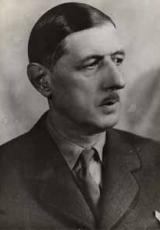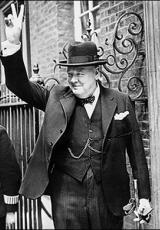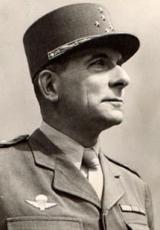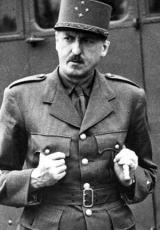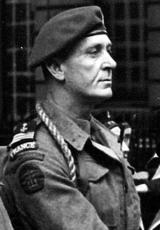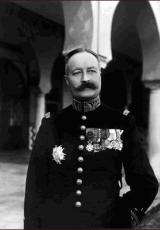D-Day
Sous-titre
6 June 1944

“I have to announce to the House that during the night and the early hours of this morning the first of the series of landings in force upon the European Continent has taken place. [...] This vast operation is undoubtedly the most complicated and difficult that has ever occurred.” That is how Winston Churchill announced the launch of Operation Overlord, in his statement to the House of Commons at noon on 6 June.
The landings were no surprise, either for British MPs or for the Germans, who by now were almost certain that they would take place. What they did not know was where or when…
The location of the landings was one of the best kept secrets of the war. The Allies had used great ingenuity to keep it a secret and put the enemy off the scent, for instance by implementing the Fortitude South plan. This vast smokescreen operation was intended to mislead the Germans into expecting an invasion of the Pas-de-Calais, by forming a fictitious invading army, in the command of General Patton, complete with inflatable Sherman tanks, plywood and canvas aircraft, and false landing craft and landing stages, all masterfully put together by a team of theatre designers in Kent.
The date was uncertain right up until the last minute, when General Eisenhower issued his famous “OK, let’s go!”, on the night of 4 to 5 June, after being informed of favourable weather conditions for the following day. On the German side, the meteorological services had proved less effective: the Kriegsmarine thought it highly unlikely that an invasion would take place between 4 and 7 June, due to bad weather. It had also cancelled its own patrols. Field Marshal Rommel, commander of Army Group B on the Western Front, was also confident of these weather forecasts, and took himself off to Germany to celebrate his wife’s birthday and try to convince the Führer to deploy more armoured divisions in the West.
It was at Rommel’s instigation that the system of German defences on the Normandy coast, one of the links in the Atlantic Wall, had been reinforced from early 1944 onwards, with the laying of more mines and obstacles on the beaches and the flooding of low-lying areas, in particular at the base of the Cotentin Peninsula. Dreaded by the Germans, the landings had been awaited for many months by Stalin, who urged his allies to open up a second front in the West in order to relieve his troops in the East. It was true that, since June 1941, the Red Army had been alone in its relentless struggle against the Wehrmacht on the European continent. By keeping a large part of the German forces on the Eastern Front, the Soviets would be able to claim a share in the success of operations on the Western Front.
The idea of a large-scale invasion of France had first been mooted in 1942. But after being postponed numerous times, planning did not get properly under way until January 1944. At the beginning of December 1943, General Dwight D. Eisenhower had been appointed Supreme Commander of the Allied Expeditionary Force (SCAEF), in command of operations. The five months leading up to D-Day were therefore decisive to the success of what remains, to this day, the largest combined operation in history, both in terms of its complexity and the resources brought into play. With extraordinary care, the operations were planned down to the smallest detail.
On the night of 5 to 6 June, from midnight, paratroopers of the US 82nd and 101st Airborne Divisions and the British 6th Airborne Division were dropped on the Cotentin Peninsula and to the east of the River Orne, respectively. Altogether, 17 000 men parachuted in. One way or another, gliders carrying men, jeeps, heavy machine guns and anti-tank weapons landed in the fields. The BBC broadcast a whole series of personal messages addressed to the French Resistance, to trigger large-scale sabotage operations against the lines and means of communication determined by the Planning Bloc. Prior to the arrival of the Allied armada, 3 467 heavy bombers and 1 645 medium bombers dropped their bombs on German coastal defences, with limited success.
At 5.45 am, the Allied naval bombardment against the German strongpoints and coastal batteries commenced. It, too, largely failed to hit its targets. Their batteries may not have been destroyed, but the defenders’ morale had begun to wane under this deluge of fire from the sea.
Between 2 and 3 am, a handful of German radar stations that were still intact at last detected the echo of the huge invading fleet, preceded by a screen of 277 minesweepers. The fleet was comprised of 1 200 warships and 5 700 transport ships. Proof that the element of surprise had been successful was that not a single German submarine reached the English Channel to attack the Allied fleet. The part of Operation Overlord concerned with crossing the Channel had been codenamed Neptune. 130 000 men, mostly Americans, British and Canadians, together with 20 000 vehicles, landed with the first three tides. In accordance with the plan prepared in minute detail by the SHAEF, they gained a foothold on five beaches on the eastern side of the Cotentin Peninsula, between Quinéville and Ouistreham: the First United States Army on Utah and Omaha; the British Second Army, including the 3rd Canadian Infantry Division, on Gold, Juno and Sword.
On Utah Beach, the 4th US Infantry Division achieved its objectives, with fewer losses than expected. Further east, the 50th British Division gained a foothold equally promptly on Gold Beach, and advanced swiftly inland. The landing of the 3rd British Division on Sword Beach and the 3rd Canadian Division in the Juno Beach sector was less straightforward, due to stiffer resistance. After landing on Sword, the French troops of the Kieffer Commando took the Riva Bella casino in Ouistreham with heavy losses, before linking up with the men of the British 6th Airborne at Pegasus Bridge. But it was at Omaha, a long, curved beach dominated by cliffs, such as those of the Pointe du Hoc, to the west, that the Allies suffered their heaviest losses. Here, the German defences were intact, the aerial and naval bombardments all having missed their targets. The first waves of American soldiers were mown down by machine gun fire as they left their landing craft in the open, and the Wehrmacht soldiers defended their positions doggedly. Having at one point considered simply abandoning their mission, the 1st and 29th US Infantry Divisions finally succeeded in taking their objective, but with very heavy losses. For the Americans, Omaha would forever be dubbed “Bloody Omaha”.
By the evening of 6 June, Operation Overlord was a success. Allied losses were lower than expected, but even so there were 10 000 dead, wounded or missing, a quarter of them on Omaha alone and another quarter from the 82nd and 101st US Airborne Divisions. The Allies held several bridgeheads reaching a depth of six miles. The Battle of Normandy could commence. For the belligerents, it would all depend on their capacity to intensify their operations over the days to come.
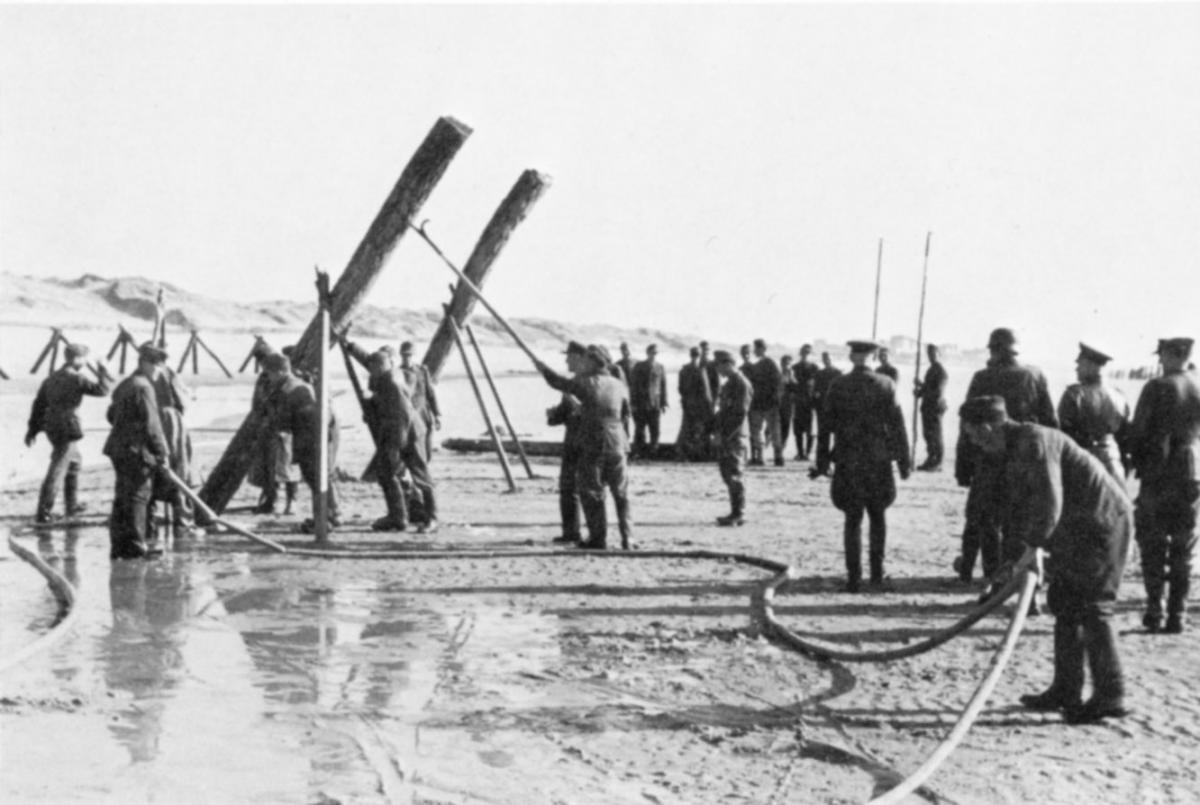
Under German orders, a team of workers sets up obstacles on a Normandy beach, 1944. Copyright US National Archives and Records Administration (NARA)

Aerial view of Royal Navy ships gathered off the Isle of Wight before departing for the Normandy beaches. Copyright Imperial War Museums (A 237 20 A)
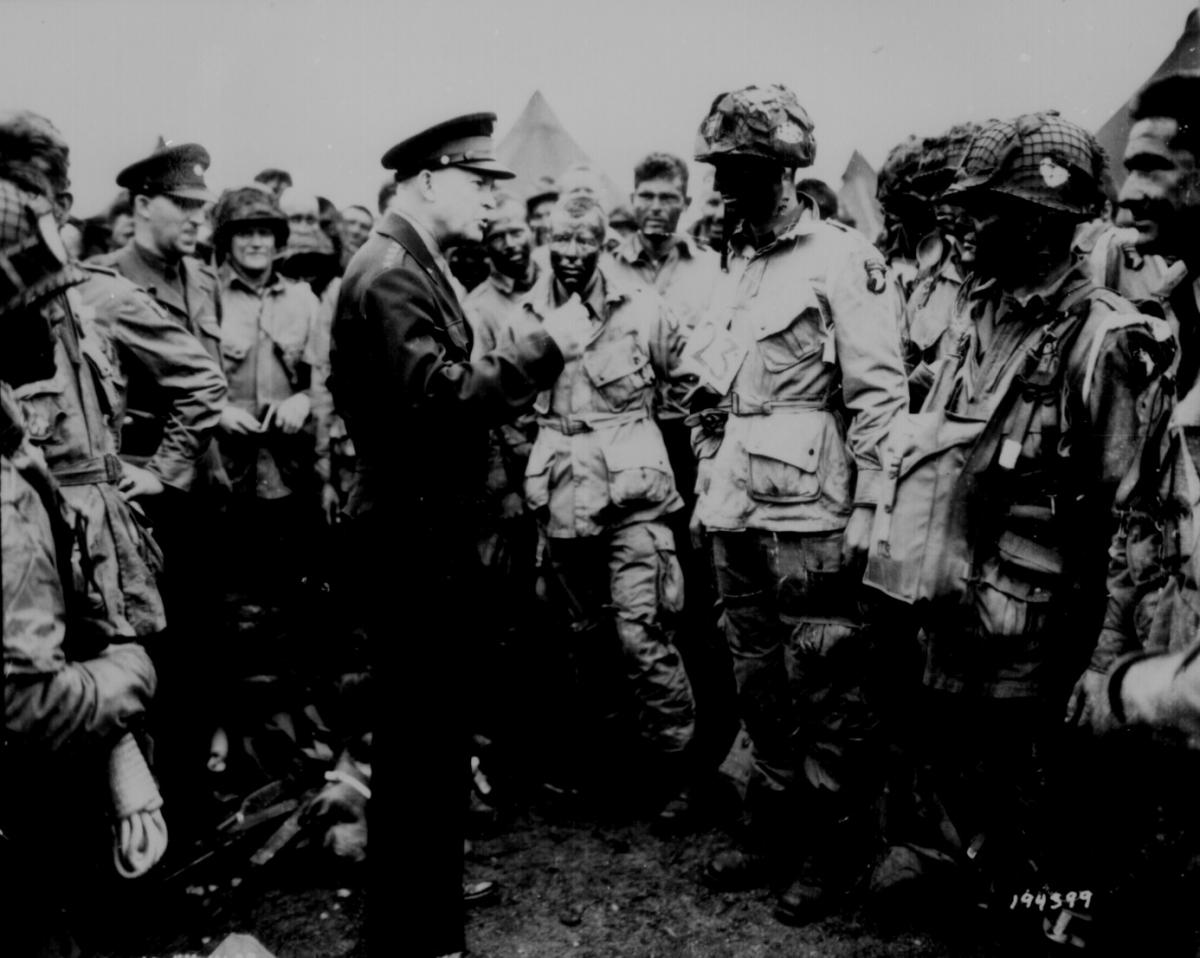
5 June 1944 - General Eisenhower addresses troops of the 101st Airborne Division before their departure. Copyright US National Archives and Records Administration (NARA)
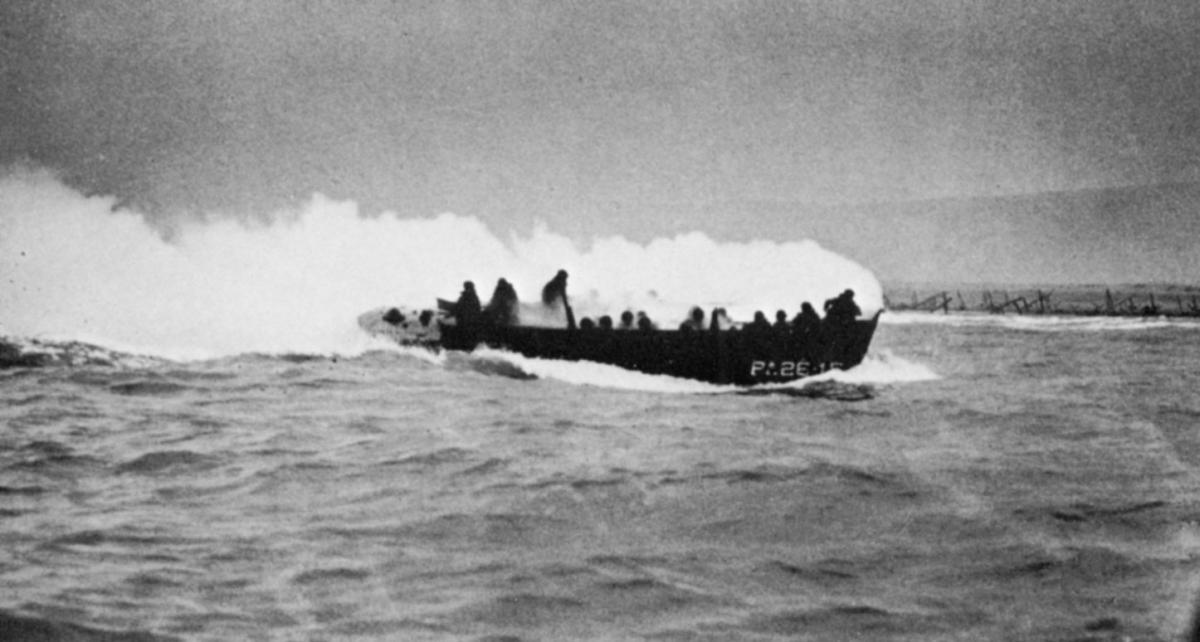
6 June 1944 - A landing craft hit by enemy fire burns as it approaches Omaha Beach. Copyright US National Archives and Records Administration (NARA) - US Coast Guard
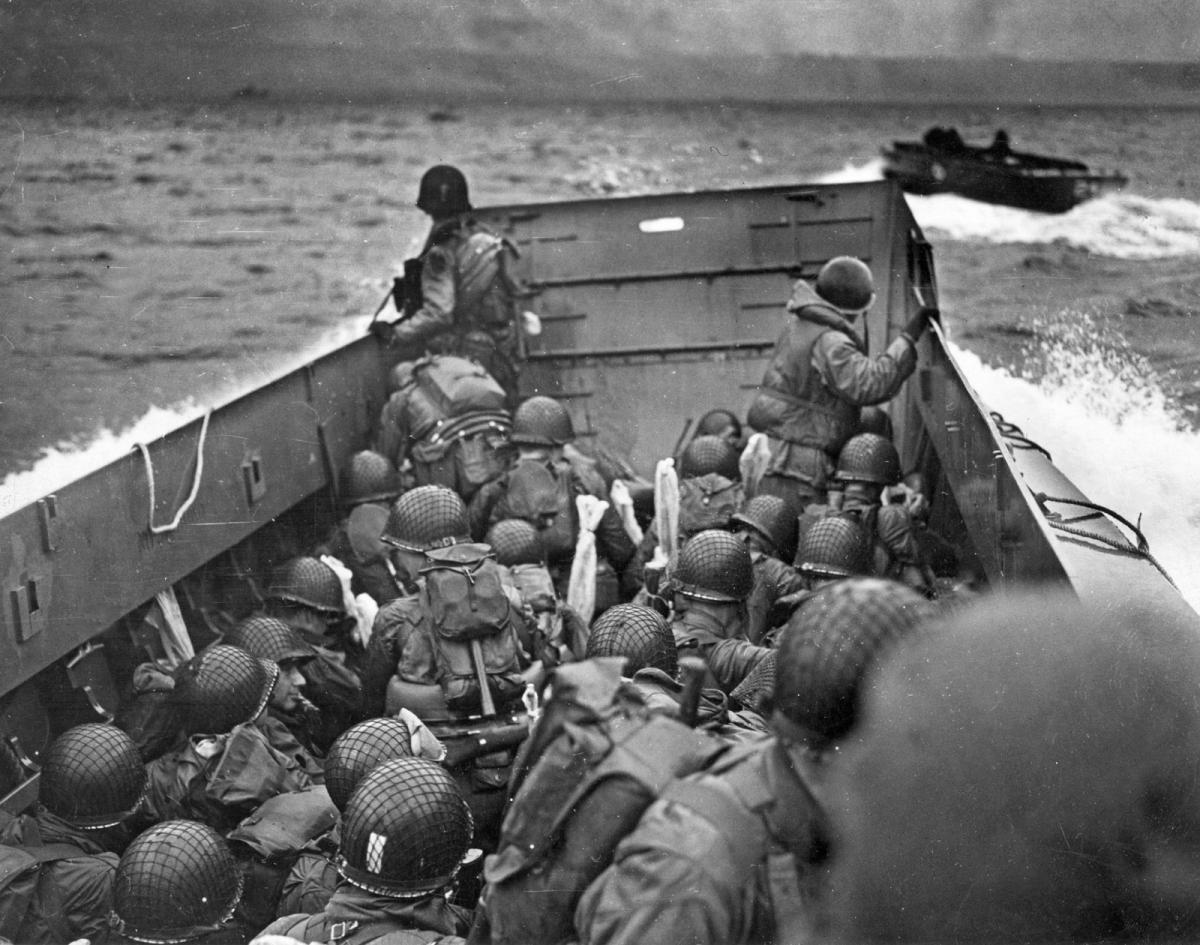
6 June 1944 - In their landing craft, American infantrymen approach Omaha Beach. Their rifles are wrapped in waterproof film to protect them from the water. Copyright US National Archives and Records Administration (NARA)
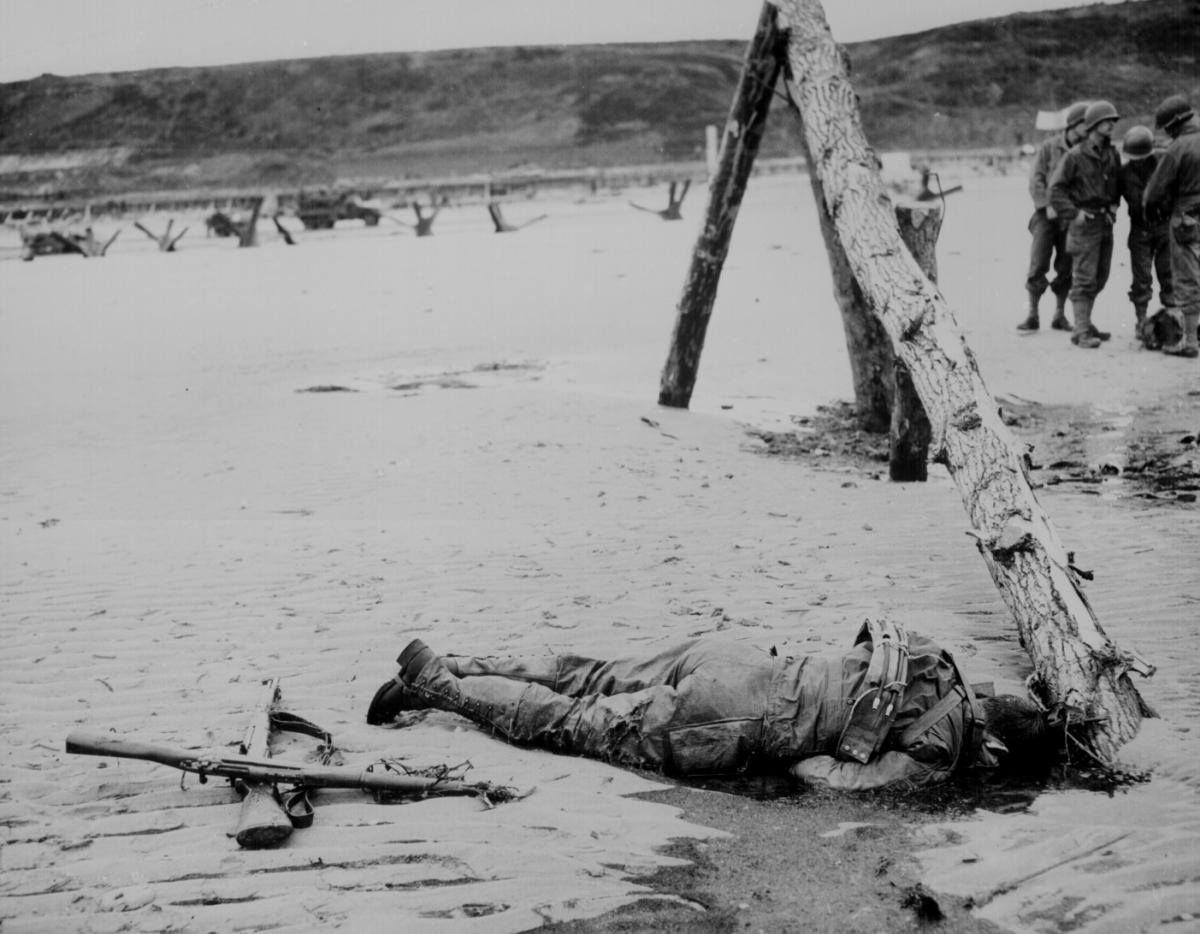
6 June 1944 - In honour of their fallen comrade, killed by German gunfire, American soldiers have laid two crossed rifles alongside his dead body. Copyright US National Archives and Records Administration (NARA)
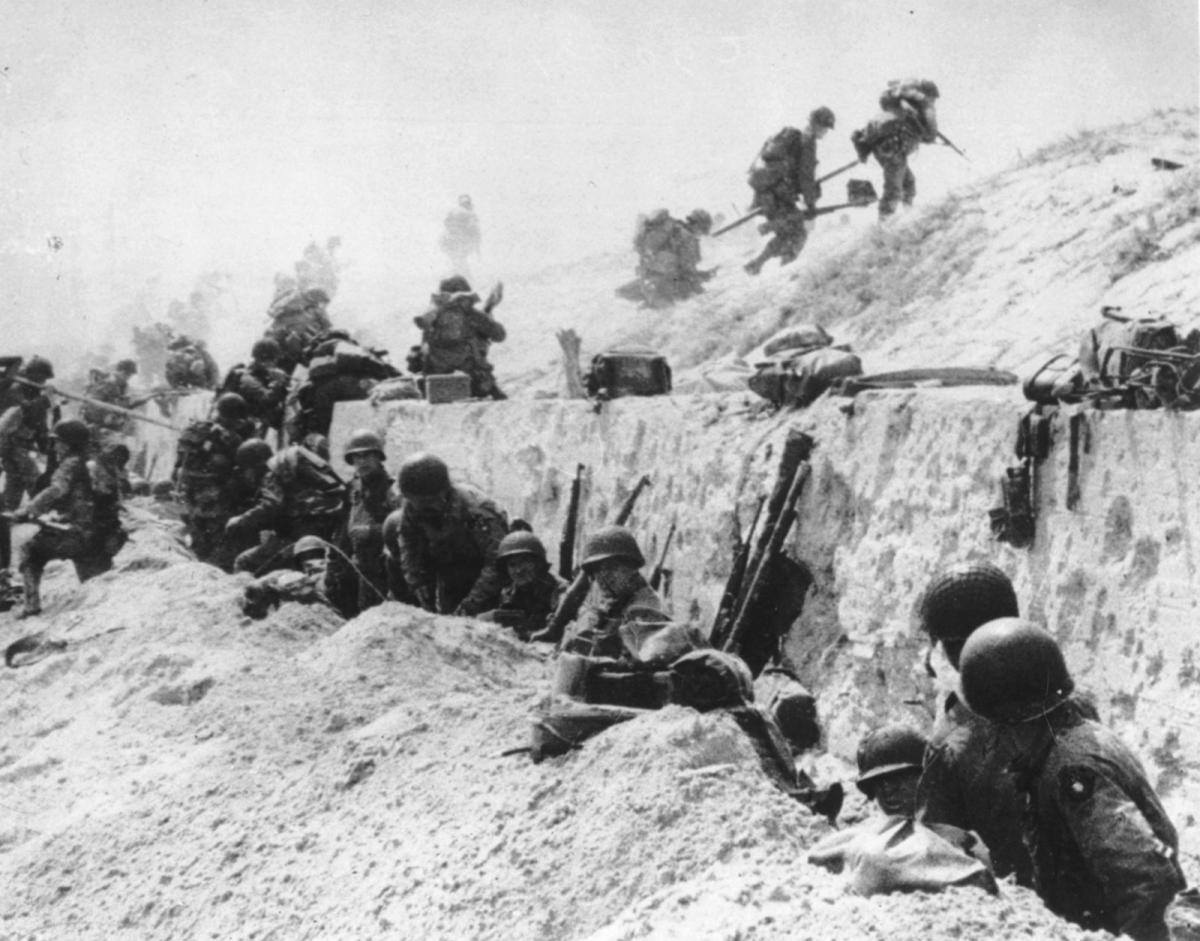
6 June 1944 - US soldiers shelter behind a sea wall on Utah Beach. Copyright US National Archives and Records Administration (NARA)
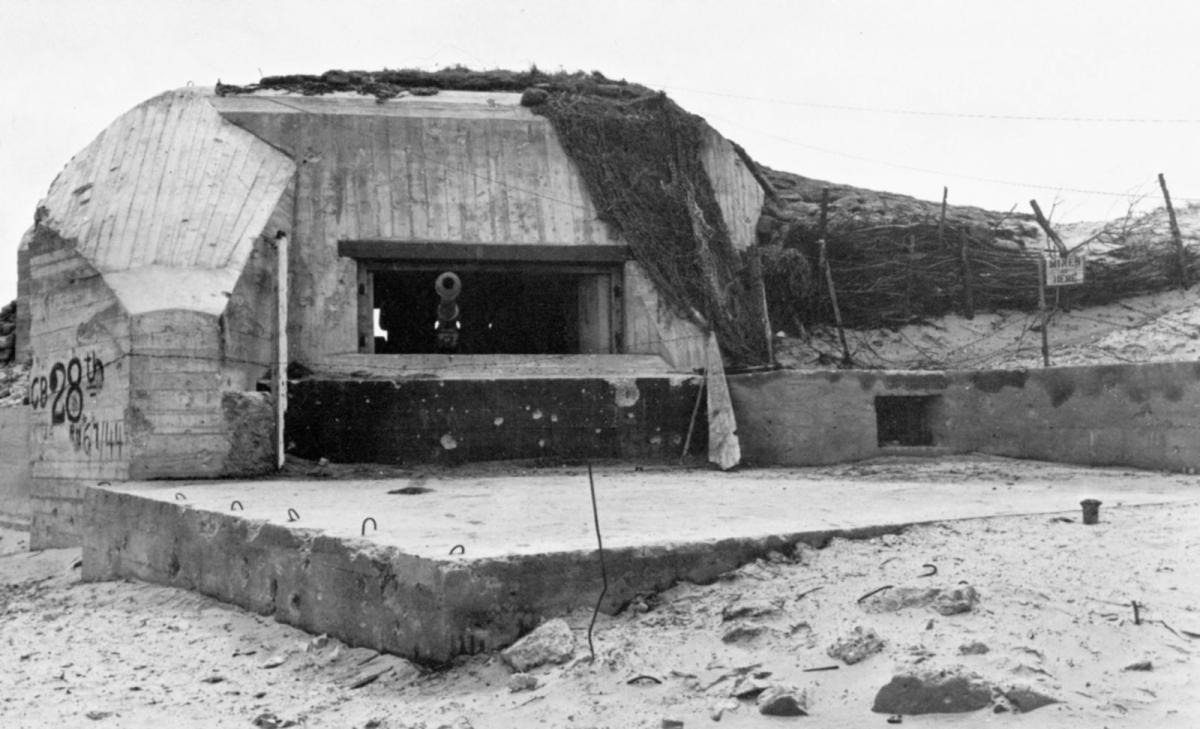
Utah Beach shortly after the landings: a German pillbox equipped with an 88mm cannon. Copyright US National Archives and Records Administration (NARA)
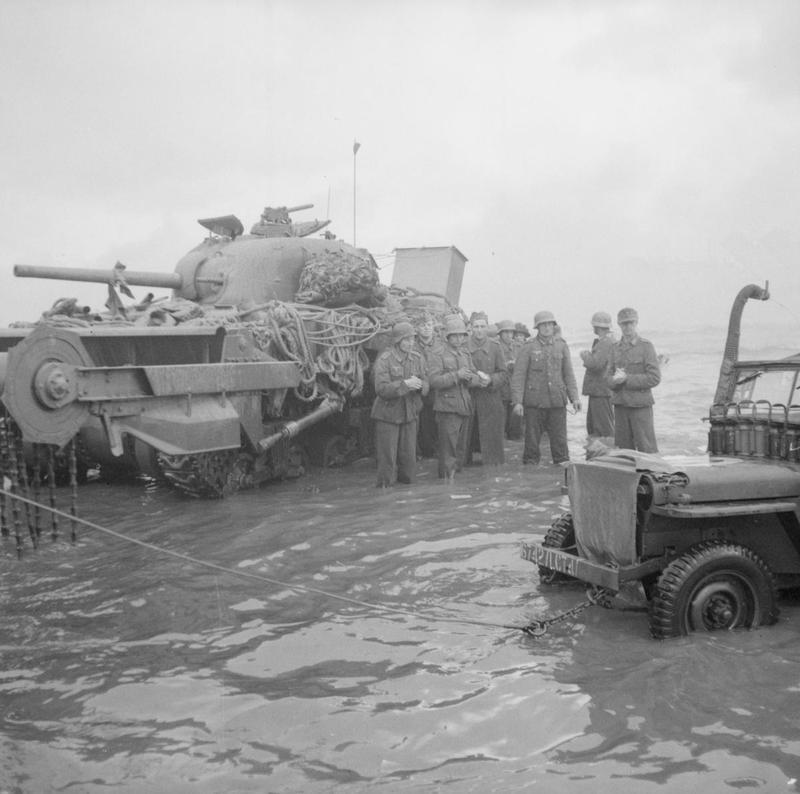
6 June 1944 - Queen Beach, in the Sword sector. A group of German prisoners beside a Sherman Crab watch a jeep being towed over the sand. Copyright Imperial War Museums (B 5089)
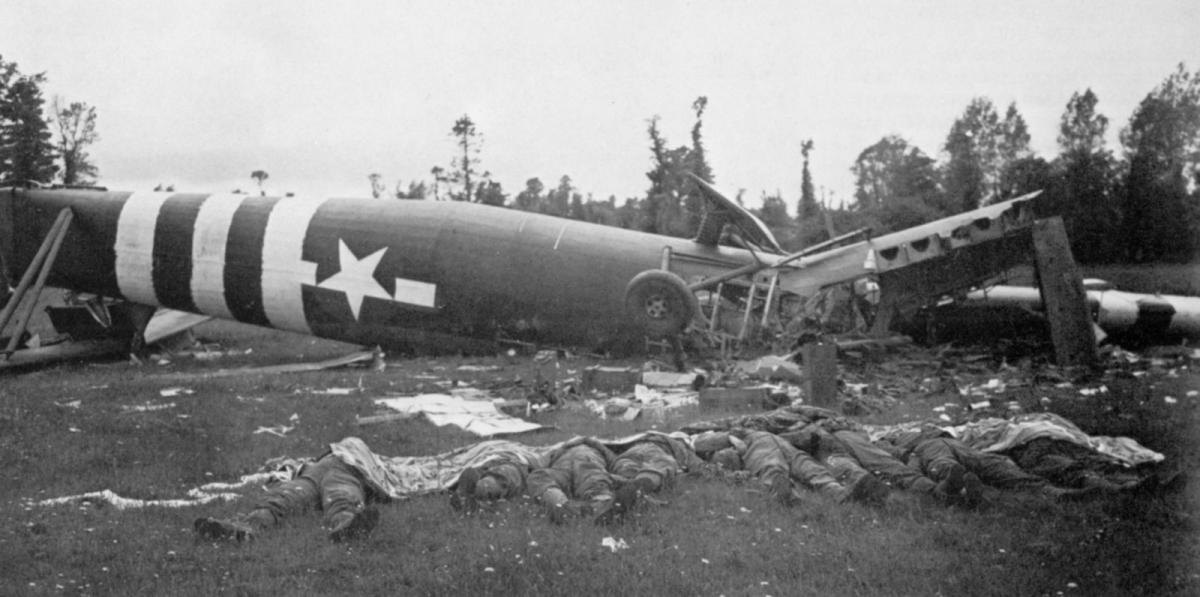
6 June 1944 - On the Cotentin Peninsula, the bodies of soldiers killed when their Horsa glider crashed lie alongside the wreckage. Copyright US National Archives and Records Administration (NARA)
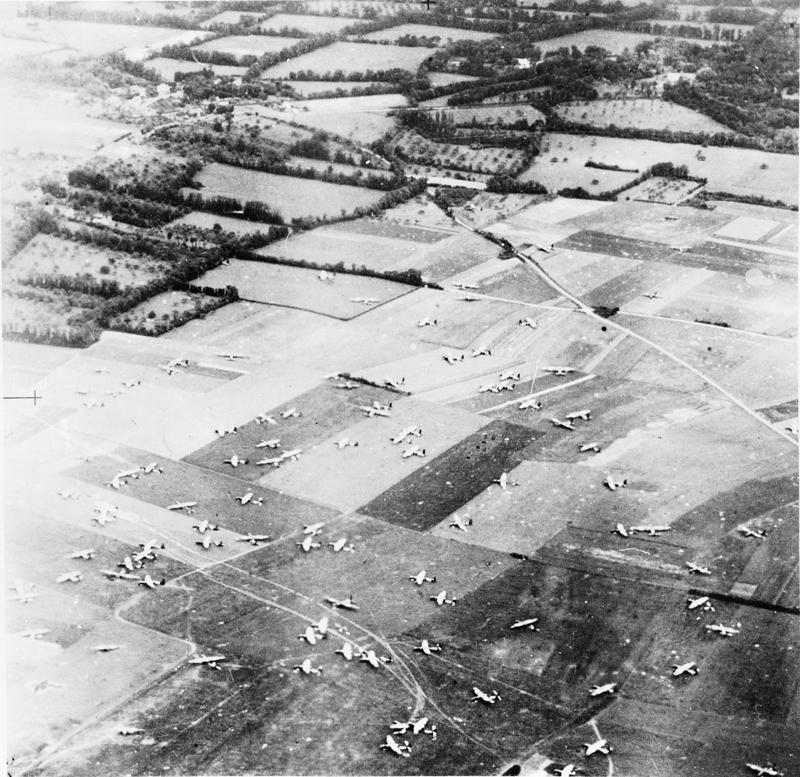
Aerial photo of the 6th Airborne’s drop zone, between Ranville and Amfreville, on the right bank of the Orne. Horsa gliders are visible. Copyright Imperial War Museums (MH 2076)

6 June 1944 - Sherman DD tanks and British soldiers advancing in Ouistreham, in the Sword sector. Copyright Imperial War Museums (MH 2013)
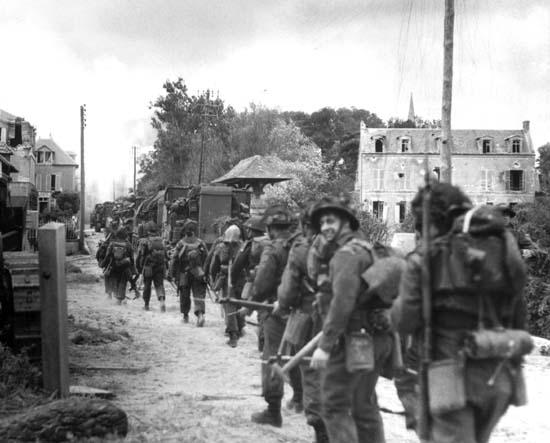
6 June 1944 - Canadian soldiers of the Régiment de la Chaudière arriving at Bény-sur-Mer from Juno Beach. Copyright Library and Archives Canada (PA 131436)
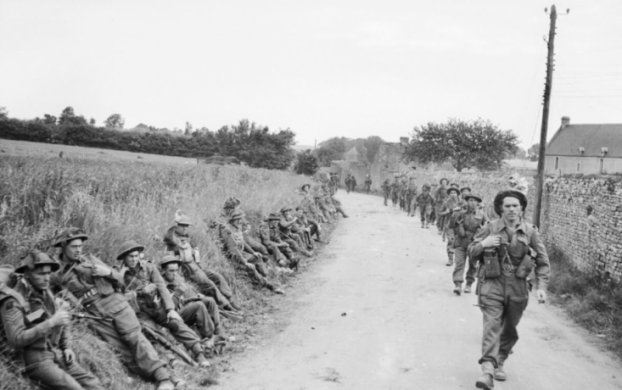
6 June 1944 - British soldiers of the 50th Infantry Division on a road between Ver-sur-Mer and Crepon. Copyright Imperial War Museums (B 5277)
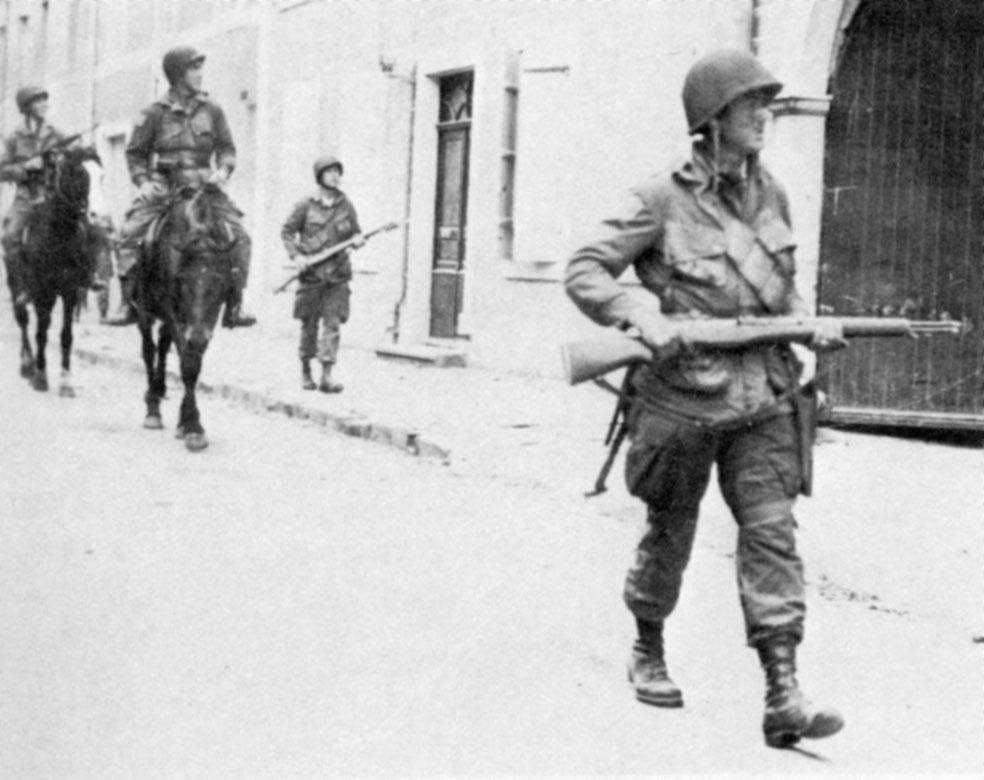
6 June 1944 - Soldiers of the 82nd US Airborne Division patrolling a liberated Saint-Mère-Église. Copyright US National Archives and Records Administration (NARA)
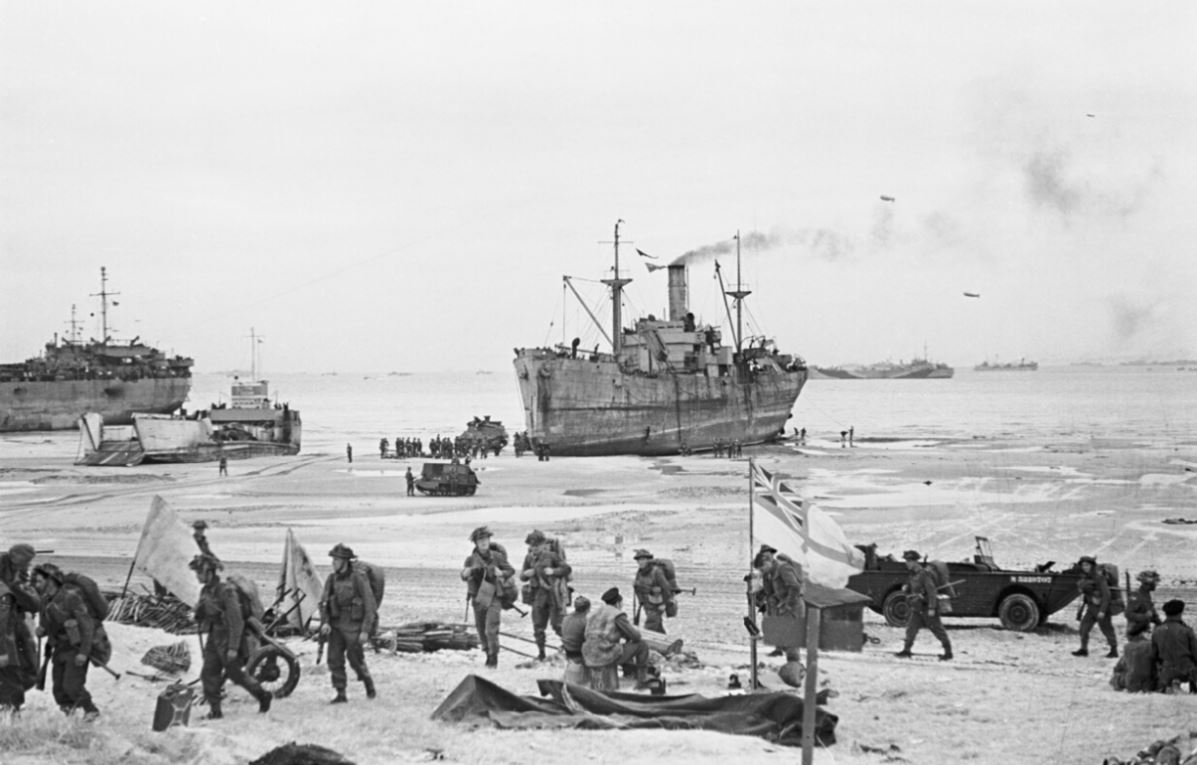
7 June 1944 - British soldiers landing on one of the Normandy beaches. Copyright Imperial War Museums (A 24012)

7 June 1944 - American soldiers riding on 15mm M12 self-propelled guns, on a beach in the Gold sector. Copyright Imperial War Museums (B 5131)
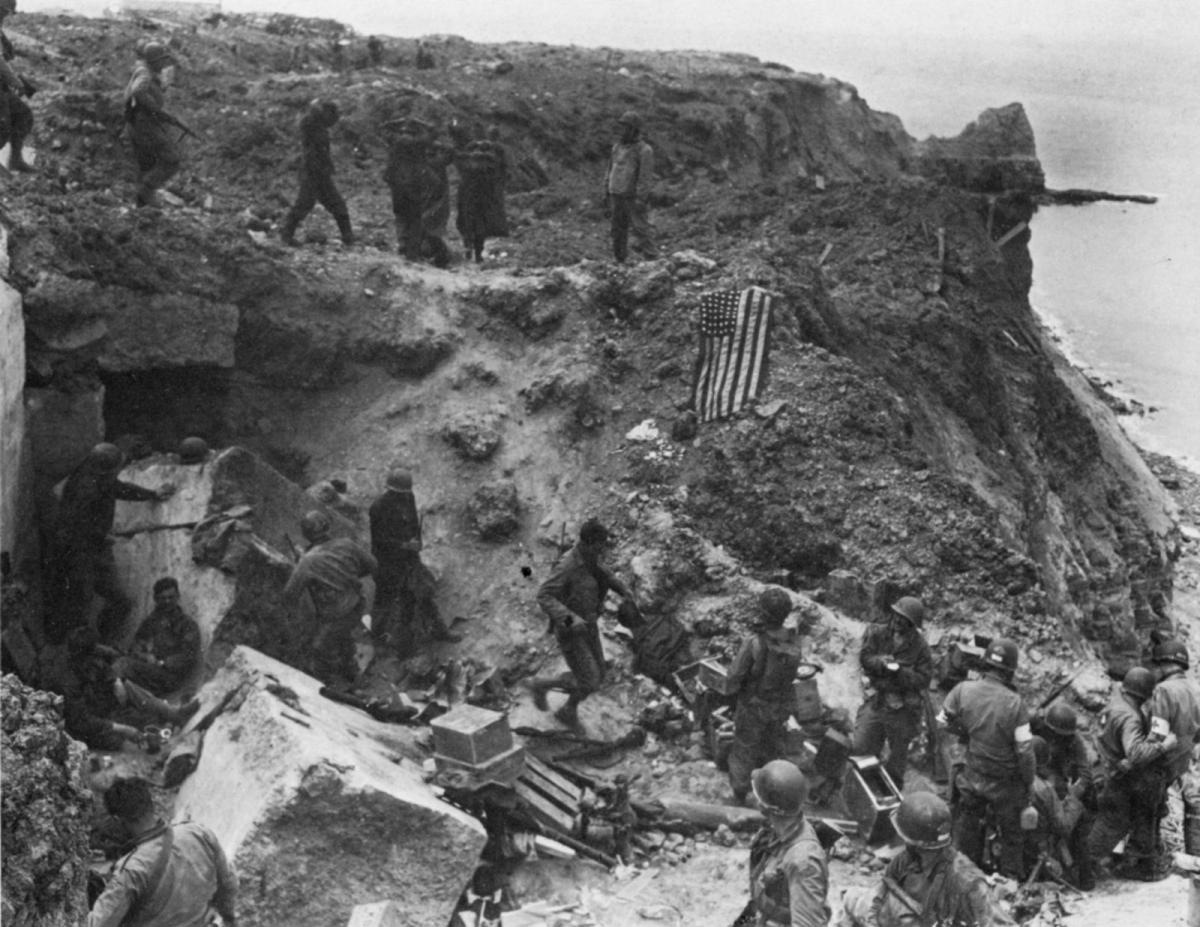
8 June 1944 - German prisoners on Pointe du Hoc. Copyright US National Archives and Records Administration (NARA)
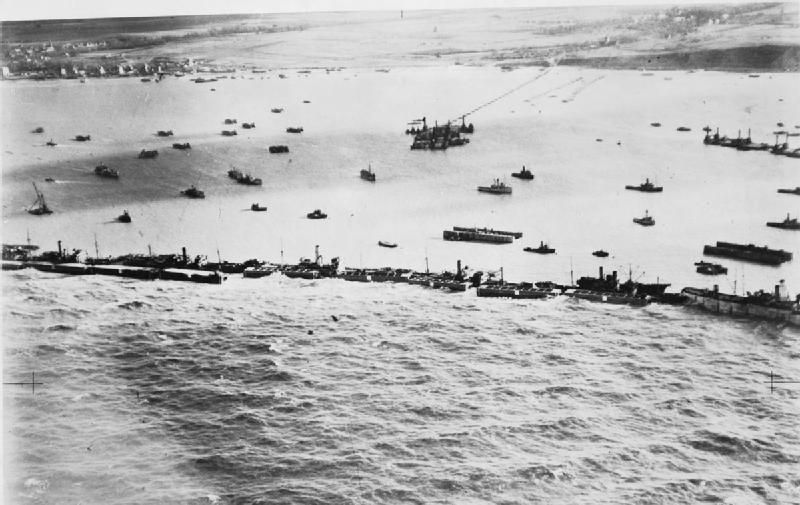
Aerial view of the Mulberry artificial harbour at Arromanches, showing clearly the effectiveness of the breakwater. Copyright Imperial War Museums (C 4846)
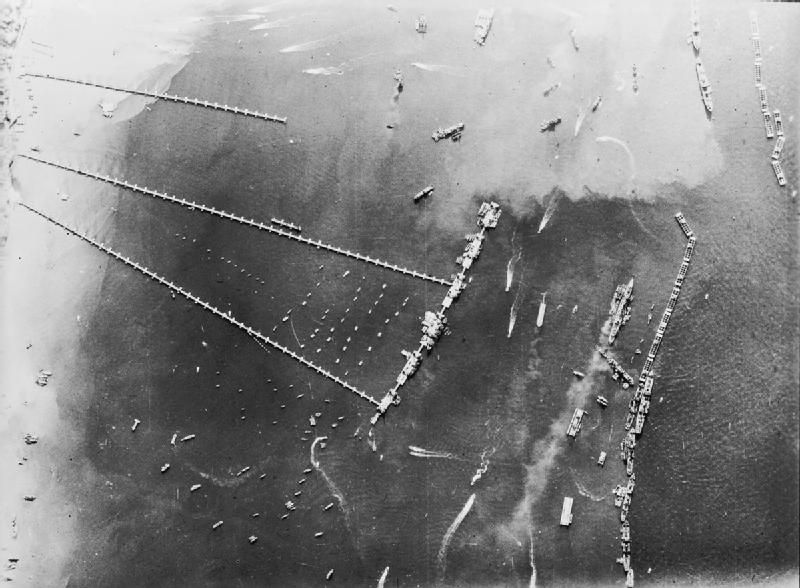
Aerial view of the Mulberry artificial harbour at Arromanches (jetties and breakwater). Copyright Imperial War Museums (C 4626)
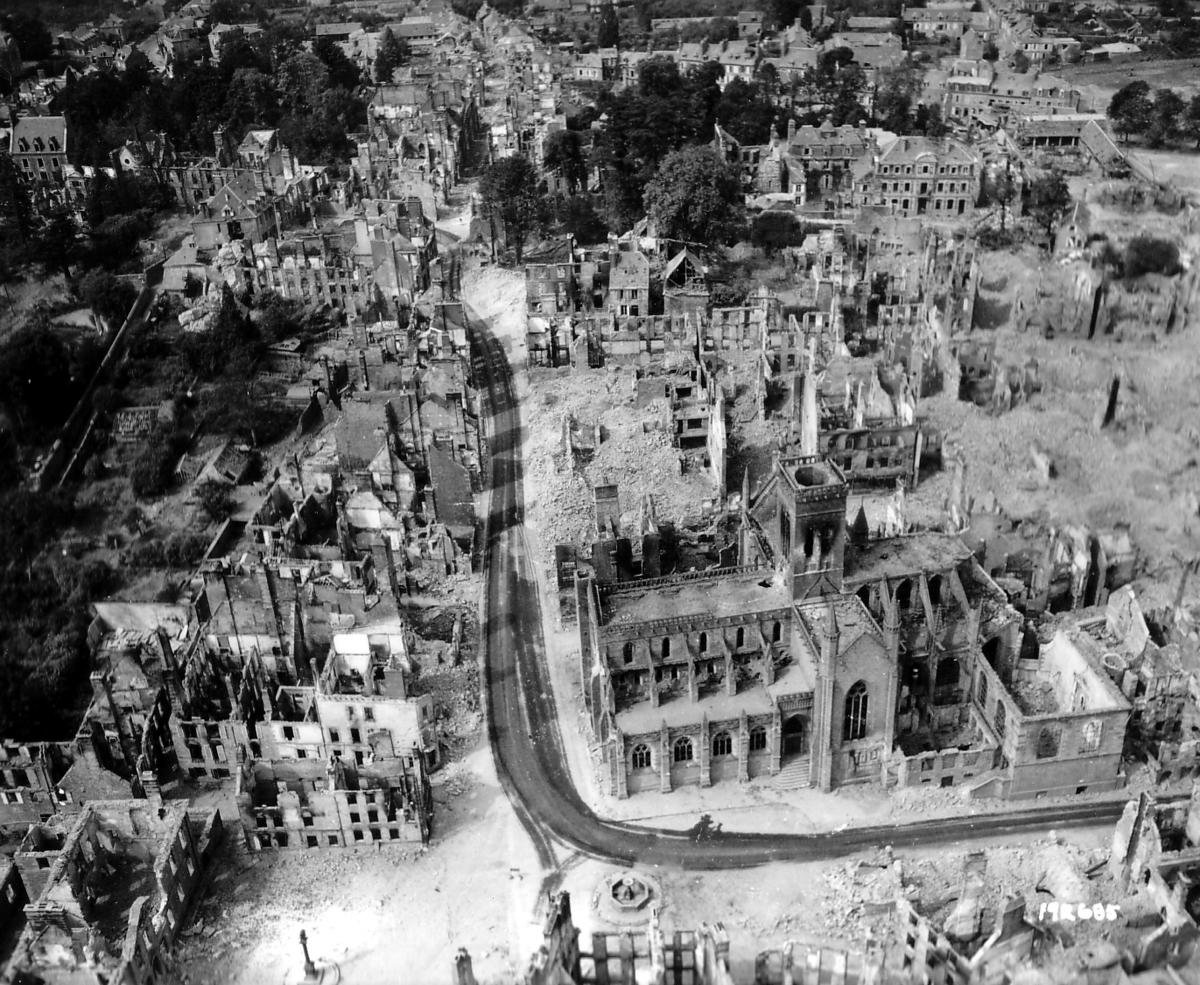
Aerial view of the town of Vire after the bombardments of 6 June 1944. The church of Notre-Dame is the only building that remains standing amidst blocks of flats in ruins. Copyright Library and Archives Canada
Personalities
Related articles
- The beaches of the Normandy landings
- Les déclarations du 6 juin 1944
- La préparation du Débarquement de Normandie
- Débarquer : le choix de la Normandie
- La Résistance en action
- D Day in Normandy
- The French on 6 June 1944
- Juin 1944 : Opération Neptune
- Operation Overlord
- Discours d'Eisenhower
- Arromanches harbour


